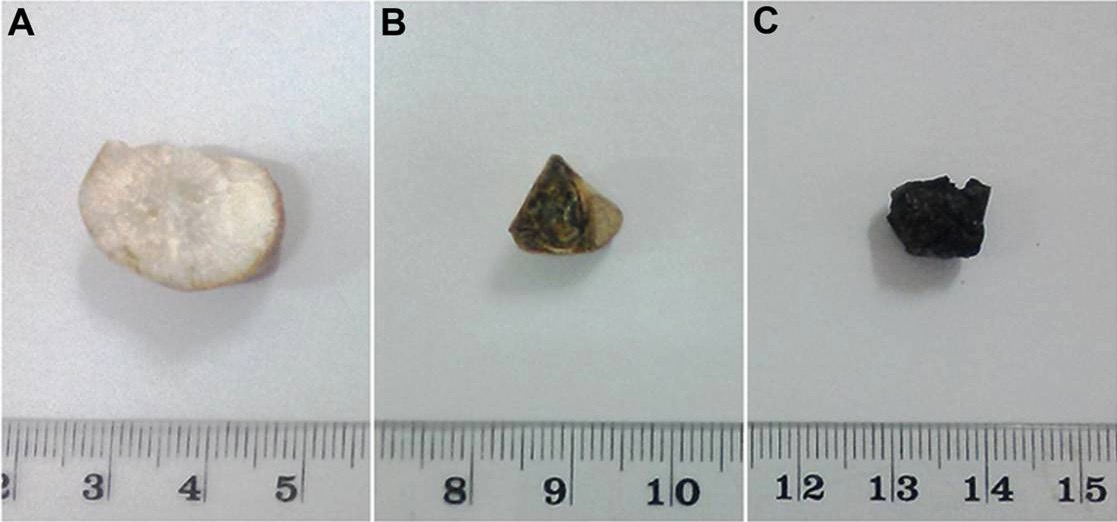Playlist
Show Playlist
Hide Playlist
Gallbladder: Cholelithiasis & Cholecystitis
-
Slides Gallbladder.pdf
-
Download Lecture Overview
00:01 Welcome back. Thanks for joining me on this discussion of gallbladder. Well, we will discuss cholelithiasis, cholecystitis, and cholangitis. Symptomatic cholelithiasis involves the formation of lots of gallstones. In this picture, you see the entire gallbladder replaced with large gallstones. 00:23 In symptomatic cholelithiasis, these gallstones only cause periodic obstruction. This periodic obstruction can cause distension of the gallbladder. We need to differentiate this from cholecystitis pathophysiology where once again, gallstones are present. 00:43 However, this time the cystic duct obstruction is not intermittent. I would like to pose a question to you. Given that the vast majority of patients with gallstones are asymptomatic, what changes do cause them to become symptomatic? I’ll give you a second to think about this. The answer is cystic duct obstruction. That’s right. Whether it’s symptomatic cholelithiasis in that there’s intermittent obstruction or acute cholecystitis, where there is a chronic obstruction, these are in common when patients develop symptoms. What are the symptoms of cholelithiasis, symptomatic as well as cholecystitis? Well, abdominal pain particularly postprandial described classically after a fatty meal. This pain can be described as colicky or crampy in the right upper quadrant. If it’s not acute cholecystitis, it’s usually self-limited. Patients can describe significant nausea and vomiting. This likely is due to the close approximation of the gallbladder with the proximal GI system namely the duodenum and stomach. Patients can also describe lack of appetite or food fear because every time they eat, they get this significant postprandial pain. 02:04 Common physical findings include a Murphy sign. A technical definition of Murphy sign is an arrest of inspiration while deeply palpating the right upper quadrant. This is suggestive of peritoneal irritation with the descent of the gallbladder. As the patient inspires, the diaphragm drops down on the right side. Dropping of the diaphragm stretches the peritoneum and causes the pain when there’s an infection of the gallbladder. What are some things that you’ll find on laboratory evaluation? Generally speaking, the chemistries are going to be normal. 02:42 When one looks at the CBC, there may be an elevation of the white count that happens in cases of cholecystitis. 02:50 Furthermore, when liver function tests are looked at, total bilirubin is generally normal unless there is a common bile duct obstruction. Similarly, alkaline phosphatase is going to be normal. 03:04 AST and ALT may be normal except in severe cases of cholecystitis where the liver may be irritated locally.
About the Lecture
The lecture Gallbladder: Cholelithiasis & Cholecystitis by Kevin Pei, MD is from the course General Surgery.
Included Quiz Questions
Which of the following is TRUE about gall bladder disease?
- Symptomatic cholelithiasis-related pain is a result of intermittent obstruction of the cystic duct.
- Symptomatic cholelithiasis is due to chronic cystic duct obstruction.
- Acute cholecystitis is usually caused by intermittent obstruction of the common hepatic duct.
- Symptomatic cholelithiasis and acute cholecystitis are the same.
- Symptomatic cholelithiasis never involves the cystic duct.
A 35-year-old female is 4 weeks postpartum and presents with a 3-day history of progressively worsening right upper quadrant pain that radiates to her shoulder. It is worse after eating particularly fatty food and she occasionally has nausea and vomiting after meals. She denies any fevers or malaise. She notes that she had gallstones incidentally found on an ultrasound in the past, but they have never bothered her before. What has likely changed to make her asymptomatic gallstones now symptomatic?
- The gallstones are now obstructing the cystic duct causing gallbladder distention.
- The gallstones have likely increased in size and number.
- The gallstones have migrated into the common hepatic duct.
- There is reflux of intestinal contents into the gallbladder via the ampulla of Vater.
- The gallstones are seeded with intestinal bacteria.
Which of the following lab values suggest common bile duct obstruction?
- Elevated total bilirubin
- Leukocytosis
- Decreased liver transaminases
- Decreased alkaline phosphatase
- Hypokalemia
What is a positive Murphy’s sign?
- Arrest of inspiration with deep palpation of the right upper quadrant
- Tenderness of palpation of the right upper quadrant
- Bruising around the umbilicus
- Palpable mass at the inferior edge of the liver
- Right upper quadrant pain that radiates to the right shoulder
Customer reviews
5,0 of 5 stars
| 5 Stars |
|
1 |
| 4 Stars |
|
0 |
| 3 Stars |
|
0 |
| 2 Stars |
|
0 |
| 1 Star |
|
0 |
Really nice teaching style and great slides. Thank you so much





